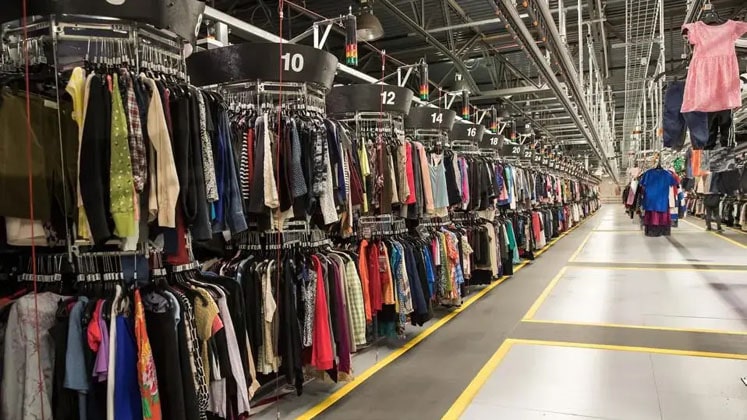The Global Apparel Sector in 2024: A wrap-up report

THE GLOBAL APPAREL SECTOR IN 2024: A WRAP-UP REPORT
Year 2024 proved to be a dynamic one for the global apparel sector, marked by a complex interplay of economic, social, and technological forces. This report looks at the key trends, challenges, and triumphs that shaped the industry, examining its performance against projections, highlighting winners and losers in global trade, and offering an outlook for 2025.
Factors that shaped 2024
Several factors exerted significant influence on the apparel industry in 2024.
Economic volatility: Global economic uncertainty, pushed up by inflationary pressures and geopolitical tensions, impacted consumer spending and supply chain stability.
Sustainability concerns: Consumers increasingly demanded ethical and sustainable practices, pushing brands to adopt eco-friendly materials and transparent production processes.
Technological advancements: Automation, AI, and data analytics continued to reshape manufacturing, design, and retail experiences.
Shifting consumer preferences: Demand for personalized experiences, comfort-driven apparel, and inclusive sizing grew, forcing brands to adapt.
While the year began with cautious optimism, growth projections were tempered by economic headwinds.
Metric | Projected growth | Actual growth |
Global Apparel Market Value | 4.50% | 3.80% |
E-commerce Share | 25% | 27% |
Sustainable Apparel Market | 15% | 18% |
(Source: Statista, McKinsey & Company)
The apparel sector showed resilience, exceeding expectations in e-commerce adoption and sustainable apparel sales. However, overall market growth fell slightly short of projections due to inflationary pressures and reduced consumer spending in key markets.
Winners and losers in global trade The global apparel trade landscape witnessed shifts in 2024 with some clear winners and losers.
Winners
Bangladesh: Continued its strong performance in fast fashion exports, capitalizing on its competitive labor costs and efficient production capabilities.
Vietnam: Further solidified its position as a key manufacturing hub, attracting investment from major brands seeking to diversify their supply chains.
India: Witnessed growth in exports of high-value garments and textiles, driven by government initiatives and a skilled workforce.
Losers
China: Faced challenges due to rising labor costs, trade tensions, and a shift towards higher-value production in other countries.
Cambodia: Experienced a slowdown in export growth due to concerns over labor rights and political instability.
Table 1: Apparel exports in $ million
Country | 2023 | 2024 | % Change |
China | 158 | 150 | -5.10% |
Bangladesh | 42 | 45 | +7.1% |
Vietnam | 40 | 43 | +7.5% |
India | 20 | 23 | +15% |
Cambodia | 8 | 8.5 | +6.3% |
Table 2: Apparel imports in $ million
Country | 2023 | 2024 | % Change |
EU | 220 | 215 | -2.30% |
USA | 180 | 175 | -2.80% |
Japan | 35 | 33 | -5.70% |
Canada | 20 | 19 | -5.00% |
Australia | 15 | 14 | -6.70% |
(Source: WTO, World Bank) Innovations shaping the industry
2024 saw significant strides in apparel innovation. For example, 3D printing and customization were strong trends. On-demand manufacturing and personalized designs gained traction, reducing waste and catering to individual preferences. Integration of technology into fabrics, enabling features like temperature regulation, health monitoring, and interactive elements also became populer. And brands explored clothing rental, resale platforms, and recycling programs to minimize environmental impact. For example, Adidas's ‘Made to be Remade’ initiative, where garments are designed for circularity, allowing consumers to return them for recycling and receive credit towards new purchases, gained significant attention in 2024.
Challenges faced
Despite progress, the apparel sector grappled with significant challenges. Supply chain disruptions were primary due to geopolitical instability, climate change events, and transportation bottlenecks continued to disrupt supply chains, leading to delays and increased costs. Sustainability concerns also increased as greenwashing remained a concern, with brands facing scrutiny over the authenticity of their sustainability claims. At the same time, ethical sourcing and fair wages continued to be a pressing concern, particularly in low-cost manufacturing hubs.
Looking forward to 2025
The upcoming year has its own promises. As Achim Berg, Senior Partner, McKinsey & Company puts it, "The apparel industry is at a critical juncture. Brands that embrace innovation, prioritize sustainability, and adapt to evolving consumer needs will be best positioned for success in 2025 and beyond."
In 2025, anticipated global economic recovery may boost consumer confidence and spending, driving market growth. At the same time, the continued integration of AI, data analytics, and omnichannel strategies will be crucial for success. And brands will need to embed sustainability across their entire value chain to meet consumer expectations and regulatory requirements.
The opportunities are many. Expect to see further growth in personalized apparel and on-demand manufacturing. Meanwhile, the circular economy will gain momentum, with increased investment in resale platforms and clothing rental services. And brands will prioritize inclusivity in sizing, representation, and product offerings.
By Fashionating World
https://www.fashionatingworld.com/new1-2/the-global-apparel-sector-in-2024-a-wrap-up-report
